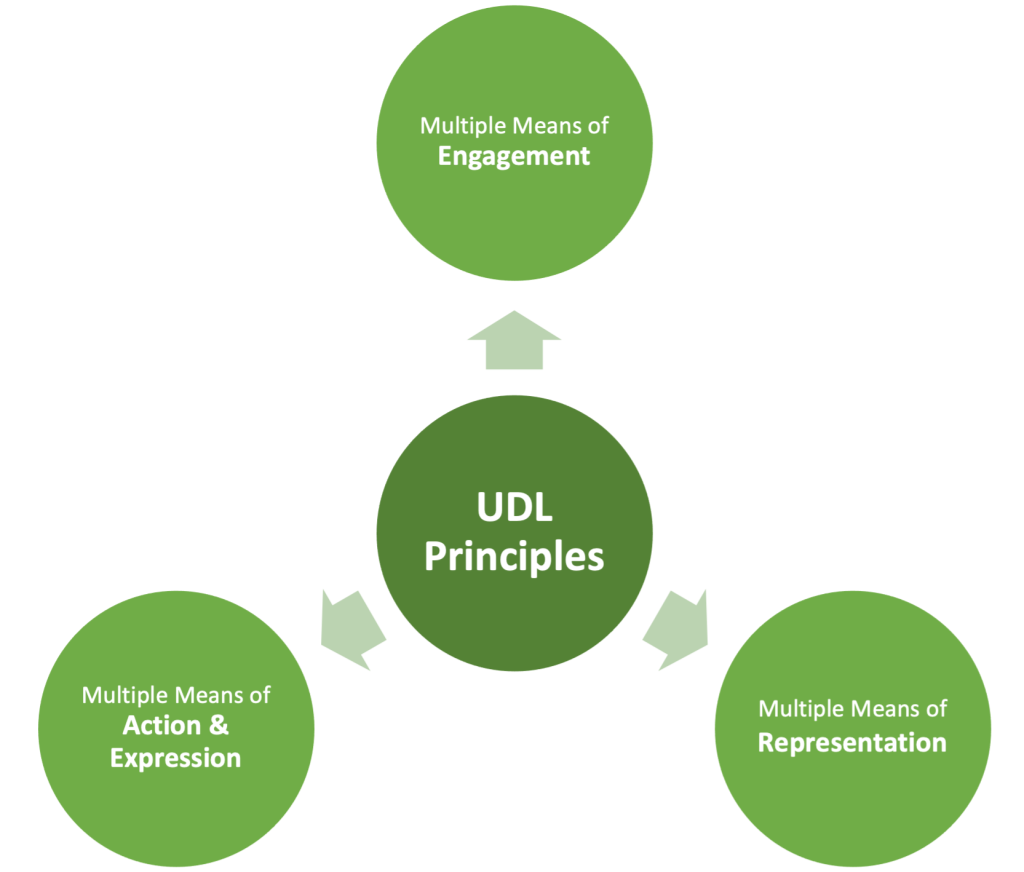Universal Design for Learning (UDL) can be defined as a framework that guides the design of courses and learning environments to appeal to the largest number of learners. UDL originates from Universal Design (UD), which is a set of principles that guides the design of architecture and products that can be used by the widest range of individuals possible: all ages, access needs, characteristics, and life stages (Institute for Human Centered Design, 2016). Both UD and UDL share a common objective of universal access, but in different contexts; UD focuses on the “built” environment whereas UDL is expressed in learning environments (Pisha & Coyne, 2001).
Proponents of UDL recognize that overly rigid educational approaches can create fundamental obstacles to learning. UDL involves incorporation of a variety of approaches to engage learners in an inclusive curriculum that values diversity.
At its foundation, UDL prompts us to consider the complex factors of learning, including the educator’s decisions in course design, students’ motivations for learning, and the learning environment. The UDL framework emphasizes flexibility in how instructional material is presented, how students demonstrate their knowledge and skills, and how they are engaged in learning. It is informed by environmental design, but also by cognitive neuroscience, learning theory, and teaching practice. This framework is often presented via the three principles of UDL:
- Multiple means of engagement – connect with learners’ interests, supporting self-reflection of learning, fostering collaboration and varying levels of challenge (e.g., open class discussion, question and answer period, applied problem-solving, goal-setting).
- Multiple means of representation – provide learners with multiple ways to engage and comprehend information and experiences (e.g., video, audio, graphics, symbols, tactile objects).
- Multiple means of action and expression – provide learners with alternative methods of demonstrating what they comprehend and different ways of managing information (e.g., assignments, multimedia presentations, concept maps).

We will examine these three principles in greater depth in the following parts of this chapter.
Although much work needs to be done in higher education in understanding UDL, the framework holds a great deal of promise and potential. Educators who incorporate the three principles of UDL into their courses tend to hold certain beliefs about teaching and learning, such as the following:
- They acknowledge there is a diversity of students in their courses.
- They believe that all students have the same right to higher education.
- They aspire to creating equitable access to learning for all students in their courses.
The following video from the Center for Applied Special Technology (CAST) offers a quick overview of UDL.
Web Resources
The Center for Applied Special Technology (CAST) developed nine guidelines, accompanied by 31 checkpoints, that illustrate the three UDL principles: The UDL Guidelines
Learning Outcomes
By the end of this chapter, you should be able to:
- Recognize the three principles of the universal design for learning (UDL) framework.
- Discuss the potential teaching and learning benefits of UDL approaches.
- Identify different ways to engage students in learning, and foster motivation and self-direction (multiple means of engagement).
- Identify options for presenting information, content, and learning materials in different ways (multiple means of representation).
- Identify multiple routes for students to demonstrate their learning (multiple means of action and expression).
- a.) Analyze course design, development, and delivery elements for potential barriers to learning, and
b.) Apply UDL principles to reduce/eliminate those barriers.
Ensuring access to quality education for all learners by effectively meeting their diverse needs in a way that is responsive, accepting, respectful, and supportive.

